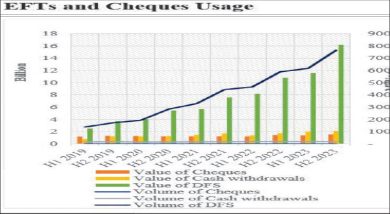Informal maize exports up 107% amid rising prices
Informal maize exports increased by 107 percent in February compared to the previous month, 812 percent higher than the five-year average, the Famine Early Warning Systems Network (Fewsnet) has said.
The higher exports, according to the US-funded activity, are due to growing demand for maize in the East African region amid severe drought being experienced by several countries and lower maize prices in Malawi.
The increases in exports come in the wake of a maize export ban effected in January and rising retail prices of maize on the domestic market, averaging 13 to 40 percent across Fewsnet-monitored markets between December 2021 and January 2022.

Reads the February to September 2022 Fewsnet Malawi Food Security Outlook report: “Based on Fewsnet integrated price projection, maize prices in Nsanje will significantly increase above the five-year average of K208 to an estimated K290 per kilogramme [kg] through March, approximately 40 percent above the five-year average for the same period.
“While prices are expected to stabilise slightly during the immediate harvest period in April and May, Fewsnet anticipates prices will rise again from July to September. Similarly, prices are expected to exceed the five-year average for this period by 40 percent, rising to K260 per kg.”
At K290 per kg or K14 500 per 50 kg bag, the price is about K4 250 more than State produce trader Admarc’s selling price of K205 per kg or K10 250 per 50 kg bag.
Ministry of Agriculture said Malawi produced 4.6 million metric tonnes (MT) of maize in the 2021/22 season against the 3.44 million MT national requirements.
This, combined with surplus stocks from the previous season (about 200 000 MT), left Malawi with an estimated surplus of 1.3 to 1.4 MT during the 2021-2022 consumption period, with Agricultural Development and Marketing Corporation (Admarc) and the National Food Reserve Agency holding about 229 000 MT out of this surplus for humanitarian food assistance and government-subsidized sales.
However, in January this year, maize traders were slammed with a temporary export ban, a month after the Ministry of Trade started issuing 2020/21 maize export licences for the export of 500 000 MT of maize.
The ban came at a time when Ministry of Trade had issued maize export permits for the export of only 14 000MT, which was 2.8 percent of the projected exports from December 2021 to January 2022 for the issuance of the licences.
Grain Traders Association of Malawi president Grace Mijiga Mhango said following the premature ban, traders were left with no markets as Admarc was not buying maize due to lack of funds.
She said traders did not benefit from the export window as the normal export demand for the country’s maize is between January and April, the time government usually imposes an export ban, observing that this is “a big mockery to commercial farming in Malawi”.
Ministry of Agriculture spokesperson GracianLungu earlier said the ministry was monitoring the situation on the ground regarding the temporary maize export ban.
Meanwhile, the ministry has projected a 14 percent drop in maize production in the 2021/22 agriculture season first round crop estimates.
Maize, as part of the consumer price index—a measure of price changes on a basket of constant quantity and quality of goods and services—contributes 42.5 percent to the inflation basket.





